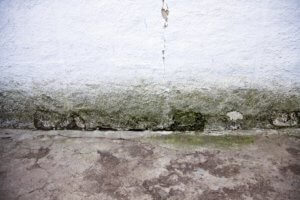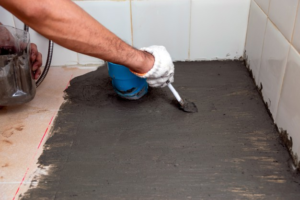
A concrete slab foundation is one of the most common and simplest forms of foundation for many homeowners. It’s easy to pour, sturdy, and knowing that a house is standing on top of durable concrete means that it’s a solid foundation that brings security for any homeowner.
Many homeowners opt for a concrete slab foundation because it’s relatively easy to apply and one of the cheapest options compared to other foundations.
When you think about it, concrete slab foundations have more advantages than disadvantages. However, that doesn’t mean you should ignore other complex foundation types such as a pier and beam or crawl space.
Although, there are instances where a concrete slab foundation is a right choice for a home. before exploring the perks and drawbacks of this type of foundation, let’s mention the two main types of concrete slab foundations
Monolithic Slab vs. Stem Wall Slab

There are two types of concrete slab foundations— monolithic slab and stem wall.
A monolithic slab foundation is a type of concrete slab foundation where the concrete is poured all at once. This is the simplest and cheapest type of foundation due to the speedy pour.
A stem wall slab is when the foundation is made from multiple pieces of concrete with a series of concrete blocks to form the outline. This type of foundation is very strong and is very sturdy.
Advantages of Concrete Slab Foundation

A majority of homes are built with concrete slab foundations because of the many perks they carry. In fact, contractors and architects choose to use concrete slab foundations for building more than 50% of new homes.
Although there are situations where concrete slabs aren’t ideal, they do have more advantages than disadvantages.
A Cheaper Option
Many contractors choose this type of foundation due to their low costs. Due to their simple design, concrete slabs need little to no customization so costs tend to be on the cheaper side. Unlike the pier and beam foundation, concrete slabs have little additional pieces so the material cost is also lower.
A Speedy Pour
The concrete slab’s simple design makes it super easy to pour. In fact, you don’t need to spend a lot of time pouring the slab since it only takes less than a day. Although there is some prep work to do prior to pouring, the entire process from start to finish should only take you less than four days. With less time, you’ll also be able to keep the costs of labor down.
A Secure Seal
Compared to a crawl space or a pier and beam foundation, concrete slab foundations results in a tight fit with the ground. So, it prevents any empty spaces below. Due to the tight fit, there will be no space for moisture to enter under your home. Of course, this is only if the slab is installed correctly and does not crack.
A tight fit of a concrete slab will prevent a lot of problems in the future such as pests, mold growth, and lower your utility bills. A crawl space foundation requires you to heat the air underneath your home, whereas a concrete slab doesn’t require this type of maintenance.
A Customizable Option
A concrete slab foundation might seem plain for those of you who like to dress up their home a bit. However, a concrete slab foundation’s simplicity means you’ll have plenty of room to play and customize. A couple of ways you can customize a concrete slab foundation is by staining or scoring the concrete.
Disadvantages Of Concrete Slab Foundation

Concrete slab foundations have a lot of benefits but that doesn’t mean that they’re perfect. They also come with a few limitations. Concrete slab foundations tend to work perfectly most of the time, but when there is a problem, they can be extremely difficult to work with.
Little Space
With little space to work with, a concrete slab means that there will be no place in the foundation for utilities such as piping, ductwork, or electrical panels. With a crawl space foundation, this is easily accessible since it has a special space underneath a home. When you opt for a concrete slab foundation, you would need to install utilities inside the walls of your home. This makes is hard to access during repairs.
Lack of Easy Access
Another thing to consider when you choose a concrete slab foundation is plumbing for your home. Since the pipes will most likely be encased in concrete, repairing any serious problems can be troublesome. You would need to jackhammer the concrete slab to access the pipes. With a crawl space, you don’t need to worry about accessing the pipes since they already have a spot underneath your home.
Foundation Cracks
Concrete slab foundations are designed to tolerate force from above. So, they are very sturdy and strong when it comes to load-bearing. However, they can be vulnerable to cracks when dealing with lateral force. For those of you who live in earthquake-ridden zones, a concrete slab wouldn’t be a wise choice.
The Takeaway

Concrete slabs are ideal for most homes but in certain situations, they might not be the right choice. For example, homes in extreme climates or earthquake-prone areas should choose another type of foundation.
If the area of your home is flat and temperatures are relatively stable, then a concrete slab is perfect for you. Concrete slabs are also ideal for anyone who’s on a tight budget since they are quite cheap compared to other options.
Ultimately, there are a lot more advantages compared to disadvantages when it comes to choosing a concrete slab foundation to build homes. The ease of installation keeps costs low and makes building a home hassle-free. Concrete slab foundations are also strong and sturdy, so you don’t have to worry about your home falling apart.


